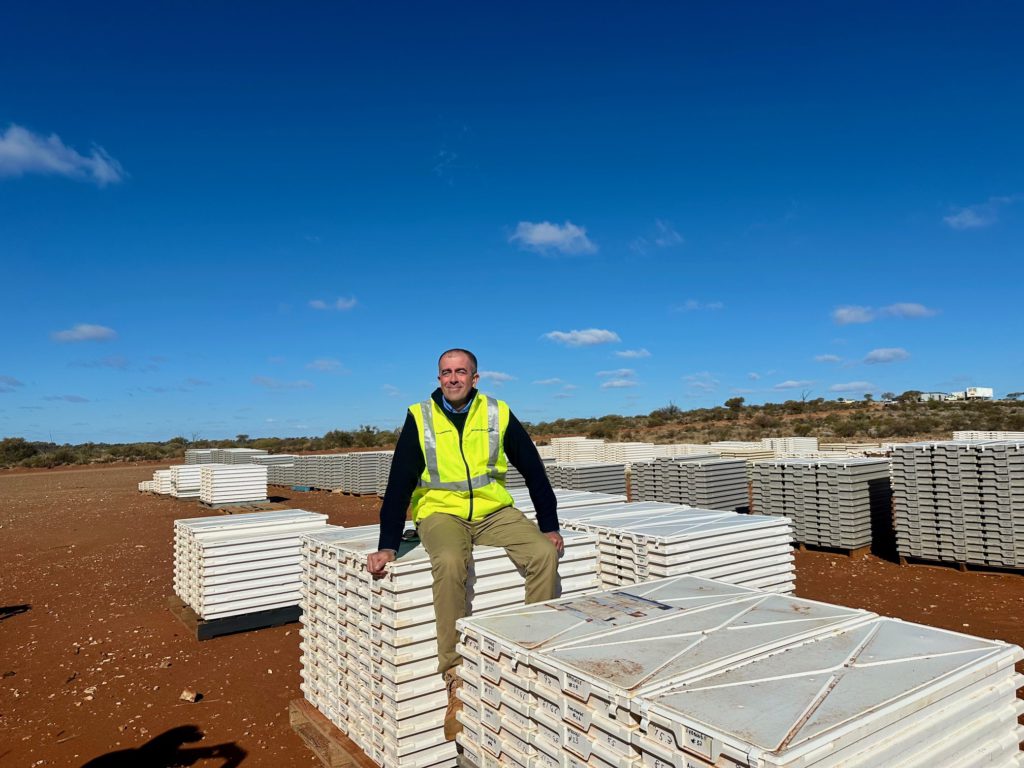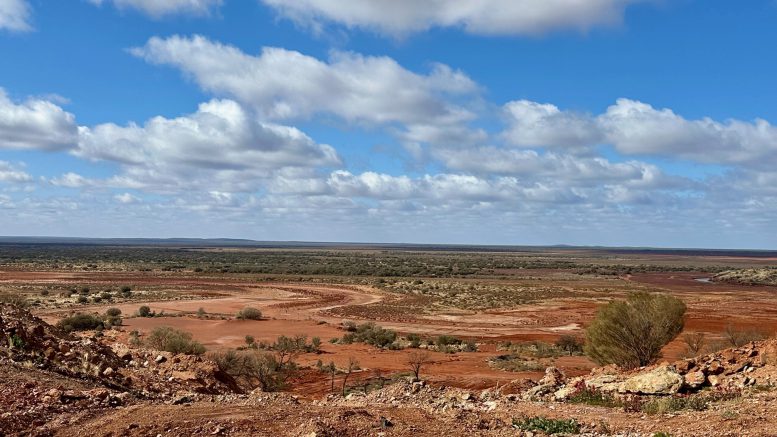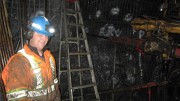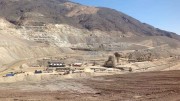Saturn Metals (ASX: STN) is planning to build a large-scale heap leach operation at its Apollo Hill project in Western Australia, making it a bit of an outlier in the Australian gold space.
While much production in regions such as Nevada, Latin America and central Asia relies on heap leaching which extracts perhaps 20% of the yellow metal globally, it’s not common in Australia.
The most recent heap leach project to be built in Australia was Binduli North in 2022, owned by a subsidiary of China’s Zijin Mining but there are only a handful of others.
Given Apollo Hill, outside Leonora in WA’s Goldfields, is a large, low-grade, bulk-tonnage open pit deposit, heap leaching was considered the best way to generate the most value.
“The Western Australians aren’t overly familiar with heap leach and we figured let’s show people that we can do this,” Saturn managing director Ian Bamborough said about a pilot project during a site visit to Apollo Hill. “The kicker is that the best businesses in the world are the low-margin, high-volume businesses, and that’s where this really starts to kick in.”
Resource update
On July 18, Saturn updated its resource to 107.4 million measured and indicated tonnes grading 0.51 gram gold for 1.84 million oz. metal, and 29.7 million tonnes at the same grade for 398,000 oz. inferred. The cutoff grade is 0.2 gram and the resource is constrained within a Whittle software-optimized open-pit shell.
Saturn is targeting first gold in 2028 after a prefeasibility study (PFS) due this year and a definitive feasibility study next year in parallel with permitting. The A$304-million (US$200-million) capital project would produce 122,000 oz. annually over a decade, according to a 2023 preliminary economic assessment (PEA).

Saturn Metals managing director Ian Bamborough at Apollo Hill. Image supplied.
Apollo would be similar to Eldorado Gold’s (TSX: ELD) Kisladag operation in Turkey in terms of size, grade and rock type, Bamborough said.
“That’s been one of Eldorado Gold’s best producing, lowest cost mines,” he said. “It’s one of the lowest cost mines in the world.”
Competitive costs
Apollo’s operating costs are forecast to be a competitive A$24 per tonne due to lower mining and processing costs for an all-in sustaining cost of A$1,857 an oz., according to the PEA. The study used a gold price of A$2,665 per oz., which is around half of the current spot price.
The project has a net present value (NPV) of A$388 million, an internal rate of return of 30% and payback period of 2.8 years. At a gold price of A$3,500 per oz., the NPV increases to A$1.08 billion.
CIL plant
While a heap leach facility has lower recoveries than a conventional carbon-in-leach (CIL) plant – around 75% versus more than 90% – heap leaching allows the company to capture more of the resource due to a lower strip ratio of 1.5:1 instead of an estimated 4.5:1.
“It’s a huge cost moving waste so that starts accounting for some of the difference between the recoveries,” Bamborough said.
In June, Saturn reported that metallurgical test work had returned an average gold recovery of 86%, materially higher than the PEA assumption, with very low cyanide consumption of just 500 grams per tonne.
Bamborough expects the company will use a gold price of A$3.550 oz. for the PFS.
“We’ll present this thing quite conservatively, because we can, and we’ll still see a high conversion and great profitability,” he said.
Bamborough estimates that at a A$3,700 per oz. gold price, Apollo Hill would generate A$240 million of cashflow per year.
“The capital efficiency here is better. It keeps the process simple in a market where we’re struggling for people and struggling for expertise, so I hate to deglamourize it, but this is a giant quarrying exercise.”
Apollo Hill’s optionality
Saturn is starting a pilot operation using a 1.2-million-tonne bulk sample mined from two small pits of about 30 metres depth to recover around 25,000 oz. of gold.
“While we were studying it, the gold price kept going up, and what was once a break-even concept actually started to look bloody attractive in terms of making money,” Bamborough said.

Saturn Metals COO Stuart Ellison (left) and exploration manager David Smith at Apollo Hill. Image supplied.
The company also had a “lightbulb moment” recently when it tracked down a high-pressure grinding roll crusher for the pilot operation. Bamborough expects capital costs for the pilot to be roughly A$40 million.
“For a junior company, what a great low-capital entry to meaningful production.”
Permits
The company already has a Native Title agreement in place that would cover the initial operation and a granted mining lease. All other permits have been submitted for approval.
Earlier this year, Saturn discovered the high-grade Iris zone, which returned a highlight result of 11 metres at 6.29 grams from 69 metres over a 350-metre strike length.
Bamborough didn’t rule out further high-grade discoveries given the company is yet to drill around half of its 1,000 sq. km of tenure.
Funding
In January, Saturn appointed chief financial officer Grant Dyker, who’s been involved in financing six projects, securing total debt funding of A$1.2 billion. Dyker is confident a stage one pilot operation would assist with funding the main project.
“If the pilot runs across several million tonnes, and it makes a good return, you’ll get the attention of a better cohort of financiers, and the financing path, for us, will be better quality for want of a better word,” he said. “The market will also reward us because we’re in production.”
Saturn’s register is 57% institutional investors including two cornerstone shareholders, Dundee (TSX: DC.A) with 19.9% and Lion Selection Group (ASX: LSX) with 15.8%. Both have built mines in their own right.
The two subscribed for around A$10 million in a $32-million March placement, with the share price doubling since then.
“If it’s near-term gold production, you’ll start to lure out institutions that aren’t currently shareholders,” he said. “That would be a focus for us to broaden our institutional register.”






Be the first to comment on "Site visit: Saturn adopts locally rare heap‑leach"